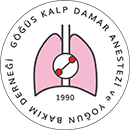

Mastering Anesthesia: Best Practices for Tracheal Resection Surgery Anesthesia for Tracheal Resection
Çiğdem Yıldırım Güçlü, Berk AkyüzDepartment of Anesthesiology and Intensive Care, Ankara University Faculty of Medicine, Ankara, TürkiyeTracheal resection is a technically challenging procedure due to altered airway anatomy and the requirement for shared airway management. Anesthetic planning involves comprehensive preoperative evaluation, including pulmonary function tests, flowvolume loops, CT scans, and bronchoscopy to define the site and degree of stenosis. Stenosis severity determines the induction and airway management method, ranging from inhalational induction with spontaneous ventilation to awake fiberoptic intubation. Total intravenous anesthesia (TIVA) is employed for maintenance due to its stability and versatility. Intraoperative ventilation modalities include cross-field ventilation, jet ventilation, high-flow nasal oxygenation, and, in some cases, ECMO. Each is selected based on the surgical stage and patient considerations. Operating room extubation is performed safely to protect the tracheal anastomosis, and postoperative care involves careful monitoring, airway protection, and pulmonary support. Overall, successful outcomes rely upon careful planning, multidisciplinary teamwork, and airway plans tailored to the individual patient, focused on both surgical and anesthetic requirements.
Keywords: Cross-field ventilation, ECMO, jet ventilation, tracheal resection, tracheal stenosisMakale Dili: İngilizce
(502 kere indirildi)

















